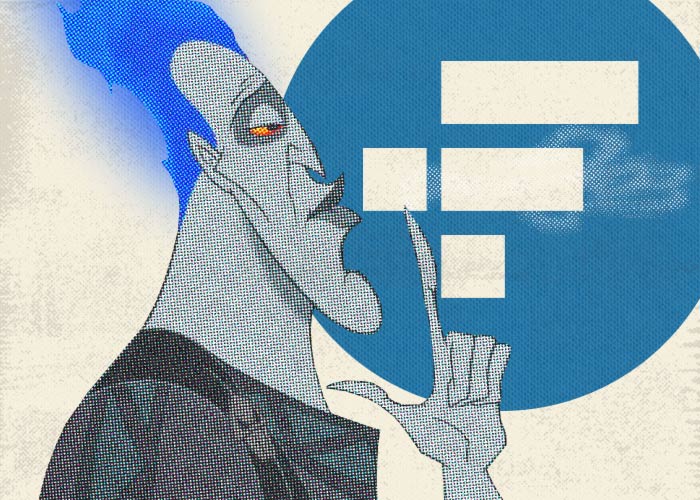Liquidity problems experienced by FTX started a chain of events, the dynamics of which continue to escalate. Therefore, we decided to capture the key ones.

The situation triggered by the liquidity crunch of the crypto exchange FTX continues to escalate rapidly. The company’s CEO, Sam Bankman-Fried (SBF), publicly apologized on Twitter, admitting that his actions were wrong. He also stated in the same thread that FTX International was solely affected by the crisis, while FTX US continues to operate steadily. Nevertheless, he said the market value of FTX assets is higher than the volume of user deposits on the platform.
A report seen by Trustnodes partially confirms SBF’s information. According to the document, FTX still has $1.3 billion in assets. The publication specifies that the data in the report is unverified, but most likely derived from the documentation of the decentralized app Zapper, an aggregator of information about assets in DeFi protocols’ accounts.
Meanwhile, Etherscan said that withdrawals from FTX accounts resumed. As of 9:30 (GMT+2) on November 11, the value of assets on the exchange’s hot wallet is about $436 million. At the same time, there continue to be reports of withdrawal issues. Genesis Trading reported that FTX’s accounts had $175 million worth of funds. LayerZero Labs acted promptly to protect itself from the possible bankruptcy of SBF’s structures. The company’s representatives fully repurchased 100% of its shares from FTX Ventures and Alameda Research.
Despite SBF’s statements about the full liquidity of FTX US, the website users can see a message that trading “may be halted,” so traders are advised to close all positions. It’s stated that “withdrawals are and will remain open.” Along with this, FTX US is reported to be leaving the Crypto Council for Innovation (CCI), as its CEO Sheila Warren announced in a comment for Cointelegraph.
The Securities Commission of The Bahamas (SCB), where FTX Digital Markets (FDM) is registered, froze the assets of the company and “related parties.” The SCB has now stripped powers from the directors of FTX and said it determined the “prudent course of actions to preserve assets and stabilize the company.” According to the statement, the Bahamian Supreme Court appointed a provisional liquidator, without whose approval FTX’s Bahamian assets can no longer be used.
Earlier, Reuters reported that in three days, $6 billion was withdrawn from FTX’s accounts, and then all withdrawals were halted. Bloomberg reported on FTX’s probable bankruptcy with reference to unverified sources. The Wall Street Journal journalists shared information about the investigation concerning FTX by the U.S. Securities and Exchange Commission and the Department of Justice.
The FTX case has already attracted the attention of the White House. In a November 10 press briefing, U.S. Press Secretary Karine Jean-Pierre said that Joe Biden is aware of the developing situation in the crypto market. She said the administration and financial authorities would “closely monitor” the events.
Amid FTX’s crisis, Maxine Waters, Chairwoman of the U.S. House Committee on Financial Services, insists on additional federal oversight of crypto trading platforms to protect customers. Statements criticizing and calling for greater government supervision of the cryptocurrency market also came from several senior U.S. officials, including Senators Elizabeth Warren, Cynthia Lummis, John Boozman, Patrick Toomey, and Sherrod Brown and House members Patrick McHenry and Tom Emmer, among others.
The “swing” around FTX has affected the entire market, particularly the stablecoin sector. On November 10, almost all major stablecoins were destabilized, and their prices fell by 2-3%. USDN was hit the hardest, falling 12%, but its price rose to $0.94 at the time of this writing.
On November 10, even the largest stablecoin USDT was affected by stability problems, with its price going down to $0.97 amid a $1.6 billion cap drop. The USDT price was also pressured by information about the opening of short positions against the asset by FTX and Alameda Research. Tether management froze $46.3 million in USDT in FTX’s accounts.
Analysts attribute the blocking of funds to government investigations against the exchange. A month earlier, Tether representatives said that the company froze private wallets only when it received a legitimate request from a verified law enforcement agent. There was also a statement that Tether didn’t “freeze wallets of exchanges or services,” so FTX’s wallet blocking was the first such precedent. At the same time, Paolo Ardoino, Tether’s CTO, tweeted that the company had no plans to “invest or lend money to FTX.”
Nevertheless, trading on FTX continues. Earlier, exchange representatives agreed with Tron management that holders of TRX, BTT, JST, and SUN tokens would be able to withdraw these assets from the platform. This triggered a speculative rise in assets on the exchange from 500% to 1,200% or more. But overall, the crypto market has recovered somewhat from the turmoil of Binance’s pullback from acquiring FTX. According to CoinMarketCap, the total cap is up by almost 5% in the past 24 hours.
What’s more, Sam Bankman-Fried’s tweet to an unnamed “sparring partner” should also be noted. “Well played; you won,” SBF wrote. We can assume that it’s about Changpeng Zhao, Binance CEO. Although it didn’t go public, their conflict with SBF was most likely the reason for the current situation.









